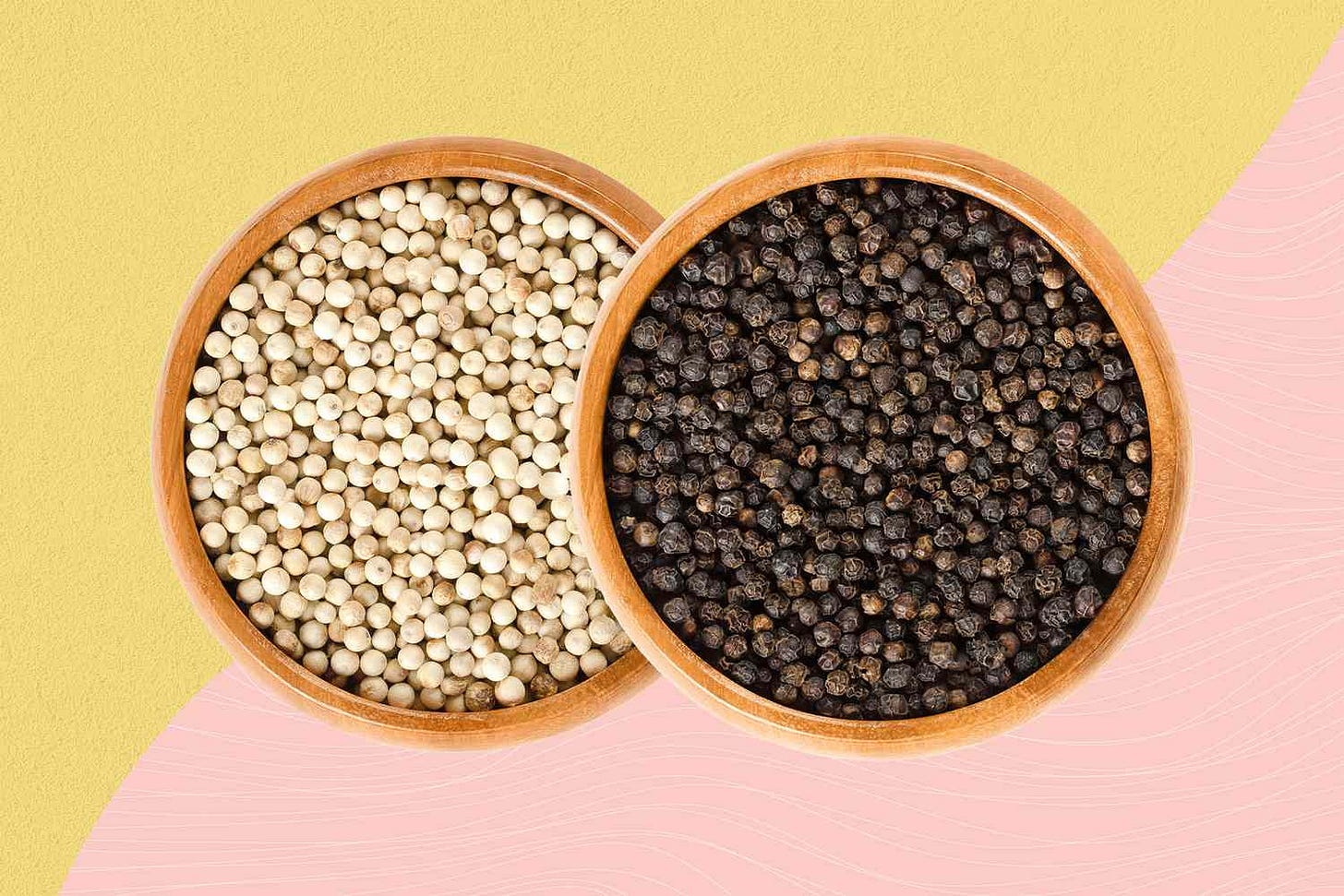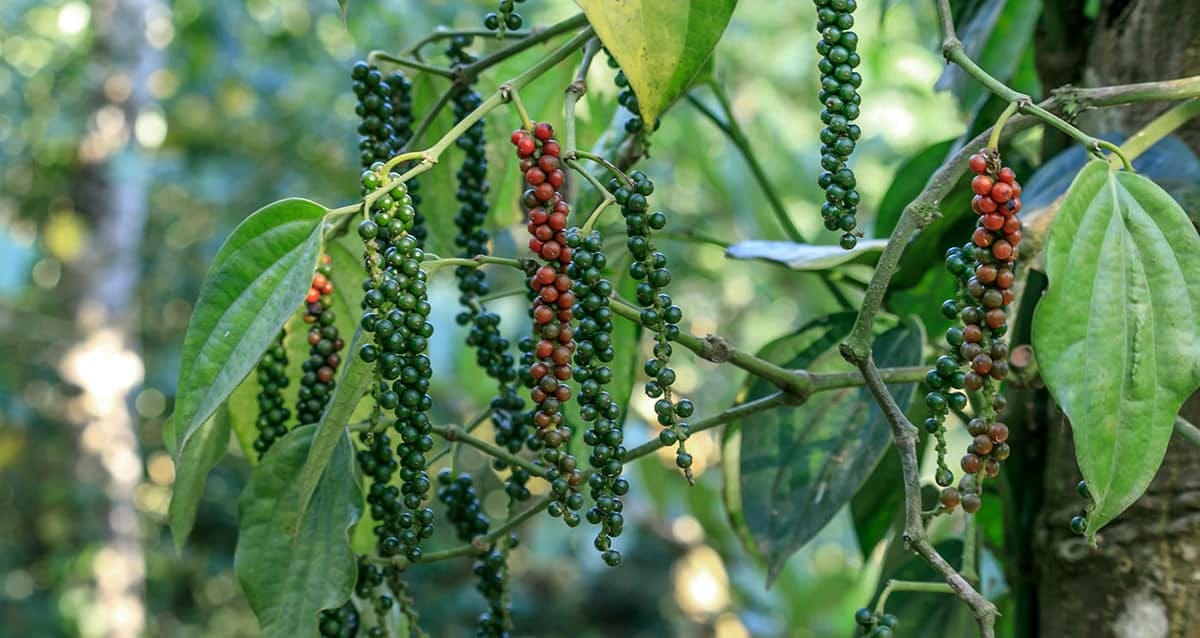Source: Eating Well
A spicy topic today! Okay that was a bad joke. Now we often use black pepper and see it everywhere because it is so versatile. Black pepper is perfect to sprinkle on avocado toast for that bit of a kick, soups or pasta for more flavor.
What about white pepper? How is it used? If you have amazingly acute taste buds, you might have noticed this ever slight flavorful peppery taste in our spring rolls. That’s white pepper doing its work!
In this post, we will cover:
What white pepper is
History of the peppercorn
How it is used
🌶️So what is white pepper?
White pepper has a different flavorful spice to black pepper, and is not quite interchangeable in recipes. Compared to black pepper, it is slightly milder in flavor when added to food, yet it has a sharp penetrating kick to it (*honestly, you have to try it yourself to tell the difference!*).
While they have different tastes, black pepper and white pepper come from the same berries of the same pepper plant, Piper nigrum.
Source: Permaculture plants
Black peppercorns are plucked before they ripen, and are immediately dried, shriveling the black skin around it.
Meanwhile, white peppercorns are picked after they have ripened and matured. Because it has stayed on the plant longer, it has a more powerful, intense aroma. Before they are dried, they are soaked in water as part of the fermentation process. The outer skin comes off in that journey, leaving behind the light-colored seed inside.
This difference in harvest timing and processing is why black and white pepper have their distinctive tastes.
🌶️What’s the story of the peppercorn?
The use of pepper dates back to at least 3000 years ago! It was first recorded in India and was used for its medicinal properties in ancient Ayurvedic medicine.
By 4th Century BCE, it was known in Greece and was an incredibly precious item that only the very rich could afford. Because of its esteemed value, there was a social custom called “peppercorn rent” because it was the preferred currency of exchange. That’s right! It was valued equivalent to gold and silver at that time. So it doesn’t come as a surprise when, pepper later became one of the earliest and historically most important commodities on trade routes during the 15th and 16th centuries.
When the Dutch arrived in Indonesia, spice production in Indonesia subsequently flourished to the Malay Archipelago. During the 19th century, increased production drove the pepper prices down and it soon became an affordable commodity.
🌶️How was white pepper introduced into Asian cuisine?
Today, Indonesia, Vietnam, India, Malaysia, China and Sri Lanka are among the biggest production centers of pepper. With its earliest discoveries in ancient Southeast Asia, pepper was first used for its medicinal properties, and gradually made its way into cuisines.
In ayurvedic medicine and traditional Chinese medicine, white pepper is said to have higher medicinal properties such as reducing inflammation, strengthening respiratory tracts, helping to warm the stomach and removing “cold dampness” in the body.
Unlike black pepper, white pepper can be quietly and easily added to dishes for some extra smoky heat without reducing its aesthetic value.
🌶️How is white pepper used?
White pepper is a staple spice in Asian cuisines. It is often used in stir fries to give dishes more flavor, or sprinkled on to rice porridges, soups or instant noodles for an extra spice. Because of its hot penetrating taste, you would not need to add as much as you normally would with black pepper. Just a sprinkle or small dash will do!
White pepper can also be used in various other ways like in Swedish meatballs! When Falai is homesick, her classic favorite dish to whip up is salt and pepper tofu.
Source: Healthy Nibbles by Lisa Lin
🌶️How do YOU use white pepper?
That’s it from us! Let us know in the comments how you use white pepper, and if you have any other fun facts that you would like to share. Till next time!









